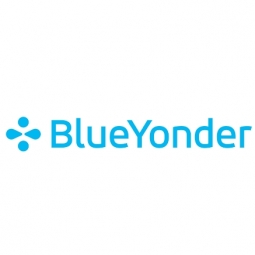Download PDF
TNT Quenches Its Thirst for Warehouse Efficiency
Technology Category
- Functional Applications - Warehouse Management Systems (WMS)
Applicable Industries
- Food & Beverage
Applicable Functions
- Warehouse & Inventory Management
Use Cases
- Warehouse Automation
- Inventory Management
Services
- System Integration
- Training
The Challenge
ThaiNamthip (TNT), Coca-Cola’s bottling partner in Thailand, was facing challenges in optimizing its warehouse operations. The company aimed to increase the productivity of both human workers and physical assets while minimizing errors. TNT's goal was to replace time-consuming, paper-based manual processes with speed and automation. As part of a long-term effort to digitalize its entire supply chain, TNT sought a solution that could help it maintain its market leadership position in the carbonated beverages market. The company recognized that continued investment in new technologies was crucial for its long-term success.
About The Customer
ThaiNamthip (TNT) is Coca-Cola’s bottling partner in Thailand. It manufactures and distributes the full Coca-Cola portfolio, including Coke, Fanta, Sprite, Schweppes, A&W Root Beer, Coke No Sugar, Namthip Drinking Water, Aquarius, Minute Maid Pulpy and Fuze Tea. TNT is currently the leader in the carbonated beverages market in Thailand. The company has always invested in technology to enable advancements for its people and processes. However, its warehouse processes were very dependent on manual labor, and it had no technology that allowed for automation.
The Solution
TNT partnered with Blue Yonder for a rapid implementation of its warehouse management and labor management solutions. Blue Yonder’s warehouse management solution is a highly scalable, real-time solution that helps TNT optimize every aspect of labor productivity and inventory movement. This solution integrates and synchronizes warehouse operations with the extended supply network. Labor management capabilities from Blue Yonder help TNT define best practices and performance expectations, track warehouse activities to enhance employee accountability, and empower supervisors to effectively mentor their teams. Together, these solutions under the unified logistics umbrella support TNT in quickly adapting to change. The company can optimize the workforce and physical assets to get the right inventory at the right location at the right time, flawlessly.
Operational Impact
Quantitative Benefit
Related Case Studies.

Case Study
The Kellogg Company
Kellogg keeps a close eye on its trade spend, analyzing large volumes of data and running complex simulations to predict which promotional activities will be the most effective. Kellogg needed to decrease the trade spend but its traditional relational database on premises could not keep up with the pace of demand.

Case Study
HEINEKEN Uses the Cloud to Reach 10.5 Million Consumers
For 2012 campaign, the Bond promotion, it planned to launch the campaign at the same time everywhere on the planet. That created unprecedented challenges for HEINEKEN—nowhere more so than in its technology operation. The primary digital content for the campaign was a 100-megabyte movie that had to play flawlessly for millions of viewers worldwide. After all, Bond never fails. No one was going to tolerate a technology failure that might bruise his brand.Previously, HEINEKEN had supported digital media at its outsourced datacenter. But that datacenter lacked the computing resources HEINEKEN needed, and building them—especially to support peak traffic that would total millions of simultaneous hits—would have been both time-consuming and expensive. Nor would it have provided the geographic reach that HEINEKEN needed to minimize latency worldwide.

Case Study
Energy Management System at Sugar Industry
The company wanted to use the information from the system to claim under the renewable energy certificate scheme. The benefit to the company under the renewable energy certificates is Rs 75 million a year. To enable the above, an end-to-end solution for load monitoring, consumption monitoring, online data monitoring, automatic meter data acquisition which can be exported to SAP and other applications is required.

Case Study
Coca Cola Swaziland Conco Case Study
Coco Cola Swaziland, South Africa would like to find a solution that would enable the following results: - Reduce energy consumption by 20% in one year. - Formulate a series of strategic initiatives that would enlist the commitment of corporate management and create employee awareness while helping meet departmental targets and investing in tools that assist with energy management. - Formulate a series of tactical initiatives that would optimize energy usage on the shop floor. These would include charging forklifts and running cold rooms only during off-peak periods, running the dust extractors only during working hours and basing lights and air-conditioning on someone’s presence. - Increase visibility into the factory and other processes. - Enable limited, non-intrusive control functions for certain processes.

Case Study
Temperature Monitoring for Restaurant Food Storage
When it came to implementing a solution, Mr. Nesbitt had an idea of what functionality that he wanted. Although not mandated by Health Canada, Mr. Nesbitt wanted to ensure quality control issues met the highest possible standards as part of his commitment to top-of-class food services. This wish list included an easy-to use temperature-monitoring system that could provide a visible display of the temperatures of all of his refrigerators and freezers, including historical information so that he could review the performance of his equipment. It also had to provide alert notification (but email alerts and SMS text message alerts) to alert key staff in the event that a cooling system was exceeding pre-set warning limits.

Case Study
Coca-Cola Refreshments, U.S.
Coca-Cola Refreshments owns and manages Coca-Cola branded refrigerators in retail establishments. Legacy systems were used to locate equipment information by logging onto multiple servers which took up to 8 hours to update information on 30-40 units. The company had no overall visibility into equipment status or maintenance history.





